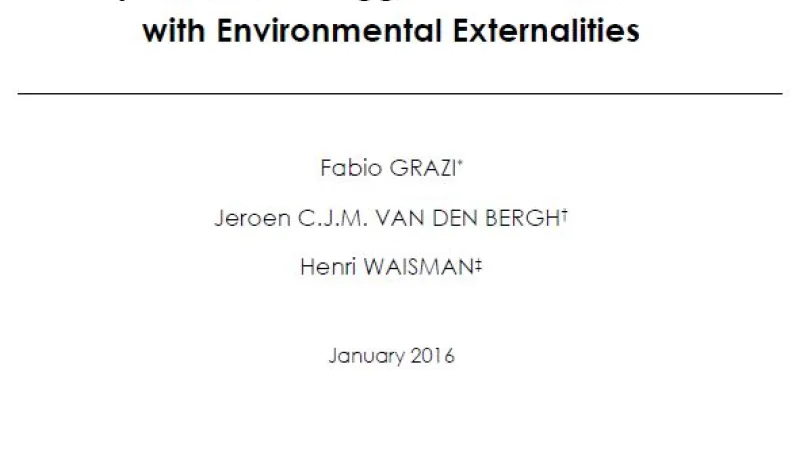Share the page
A Simple Model of Agglomeration Economies with Environmental Externalities
Published on

This paper develops a simple though comprehensive economic theory of the relationship between space and environment. It generalizes earlier modeling efforts to address agglomeration and environmental externalities in a location-trade framework of the new economic geography (NEG) literature. The model combines a number of features: industrial location, energy intensity, production- and trade-related environmental externalities, and migration. The major innovation is an endogenous “market-density effect”. This influences environmental pollution as well as the distribution of the population and economic activities across regions. In addition, we account for an explicit spatial dimension through heterogeneous patterns of land use and development. The model extends previous NEG studies by deriving analytical conditions that enable continuous and asymmetric distributions of population and economic activity across space when the environmental and agglomeration externalities are accounted for, and this for the whole range of trade costs. This makes it suitable for addressing the spatial economic and trade dimensions of environmental problems and paves the way for policy-relevant applications.
Useful Information
-
Authors
-
Fabio Grazi (AFD), Henri WAISMAN, Jeroen van DEN BERGH
-
Edition
-
18
-
Page number
-
48
-
ISSN
-
2492-2846
-
Collection
-
Research Papers
